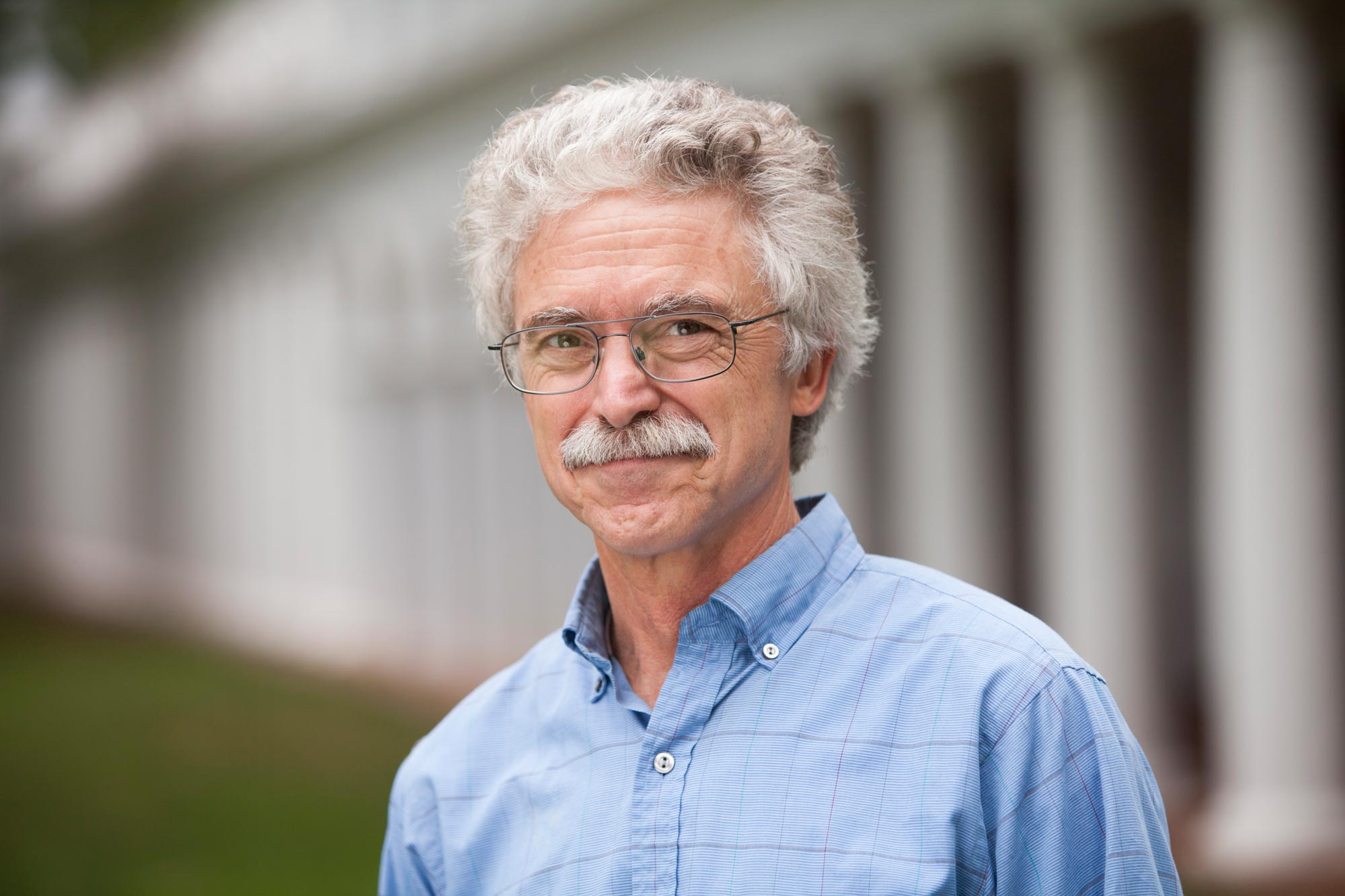Back in October, with Gov. Ralph Northam in attendance, William Shobe presented to the Virginia Clean Energy Summit preliminary findings from modeling that detailed a possible technological pathway to carbon neutrality in the state by 2050.
Now, Shobe - a professor of public policy at the University of Virginia's Frank Batten School of Leadership and Public Policy - has taken things several steps further.
In a new study released this week by UVA's Weldon Cooper Center for Public Service, Shobe and his team - which includes UVA colleagues Arthur Small and Anthony Artuso, and Ben Haley and Gabe Kwok of the company Evolved Energy Research - detail the ways Virginia's goal to eliminate carbon emissions by 2050 is achievable, affordable and can be a net benefit to the state's economy.
"This report represents a much more complete analysis of the costs and benefits of decarbonizing Virginia's economy," Shobe said.

In the report, Shobe and his team identify policy steps that can help achieve the 2050 goal and also highlight steps that need to be taken if it is to be done in a cost-effective way. An example is implementing policies to boost the transition to electric cars and working to shift the building sector away from natural gas and toward more efficient electric energy appliances, such as heat pumps and LED lighting.
"Some energy uses take quite a long time to change because the associated equipment has a long lifespan," Shobe said. "Identifying these uses and suggesting strategies for beginning the transition soon is very important if we expect to get all the way to zero emissions by 2050."
Another key point in the report is the need for Virginia government leaders to work to deploy the administrative capacity for approaching this long-term problem.
"Currently, no agency of state government has the capacity, resources and portfolio for the job," Shobe said. "We will need an agency that can develop expertise in what needs to be done to accomplish the transformation.
"In the past, the state has relied on its regulated electric utilities for this planning function, but it is pretty clear that this is not likely to work in carrying out such a large shift in how we both generate and use energy. The agency will need to coordinate the activities of many other state agencies to avoid everyone working at cross purposes. A likely choice for this would be the Department of Mines, Minerals and Energy."
For a deeper dive into the report, UVA Today caught up with Shobe, who directs the Center for Economic & Policy Studies at the Cooper Center
Q. In a nutshell, can you tell us why Virginia eliminating carbon emissions by 2050 will benefit the state's economy?
A. There are several benefits to eliminating our greenhouse gas emissions.
- One of the biggest savings is in health costs. We have lots of strong evidence that burning fossil fuels in our cars, homes and power plants causes quite a lot of harm to people's health. And the damages from pollution are not equally distributed; lower-income families suffer disproportionately from air pollution caused by burning fossil fuels.
- Then, of course, there are the benefits from joining with other states and countries to control greenhouse gases. The costs of climate change are mounting every year, and the problem cannot be solved unless everyone agrees to cooperate. Virginia has a great deal at stake, from the coast to vineyards, farms and forests. If we won't step up, why would we expect others to?
- There is also an economic benefit to shifting from importing energy resources to making our own energy at lower cost at home. The cost of solar panels for generating electricity fell by 90% between 2009 and 2019. Large-scale solar power plants are now the cheapest way to expand electricity generation in Virginia. And we are also gaining experience with offshore wind, rooftop solar and other new energy technologies. If we can do it cheaper at home, we get a direct economic benefit from substitution homegrown energy for imports from Texas and elsewhere.
Q. What are some of the specifics in terms of the expected economic impact? Which sectors in the state do you expect to see the greatest net benefit? In your report, you state that the economic benefits in improved health, reduced global warming and greater domestic energy production outweigh the costs of decarbonization. Are you able to estimate by how much?
A. The purpose of this study was to assess technical feasibility and to bracket the costs of the energy transition. We have made estimates of the approximate savings per ton of CO2 reduced, but we have not yet carried out a comprehensive benefit cost analysis. Our initial results suggest that the average cost of reducing each ton of CO2 is below the average benefit that we earn in improved health and reduced climate damages, although the specific estimates of both costs and benefits are subject to a lot of uncertainty. Any additional economic benefits in addition to the health and climate savings just add to the total, but we have not yet had a chance to estimate the likely magnitude of those savings. It's on our to-do list.
Q. In conducting this study, what was the biggest surprise?
A. Our model shows a large contribution of offshore wind to our future electricity supply. I was expecting that both utility-scale solar farms and onshore wind, along with some rooftop solar, would provide our renewable energy mix in 2050. The pathway chosen by our engineering model surprised us by suggesting that, given current cost trajectories, offshore wind costs will fall enough to make it the preferred resource after solar farms. Onshore wind didn't get chosen because our wind just isn't steady or strong enough to justify the cost of the turbines. Rooftop solar didn't make the cut, not because the technology is expensive, but because all the 'soft' costs of marketing, permitting and contracting are still too high and we couldn't just assume that these will go down the way we expect new technology costs to go down.
Also, it was a bit surprising that hydrogen as a renewable fuel and storage medium is starting to show up in planning models. There is a reason why hydrogen is getting such a buzz these days.
Q. In the report, you provide a "rough chronology" of what needs to be done to transform Virginia's energy economy. Can you give readers a quick synopsis of that?
A. The very first thing we need to do is to stop adding fossil fuel infrastructure and assets that will last until 2050, but cannot be repurposed to serve a non-emitting energy supply.
Second, we need to build the required state administrative capacity for planning, piloting and evaluation of new energy technologies and strategies. It no longer makes sense to rely on our regulated, investor-owned utilities to do this for us.
Third, we need to start now the process of turning over the large stocks of vehicles and building appliances from fossil-fuel-using to non-emitting replacements. Changing over large stocks of vehicles and appliances takes lots of time.
Q. How does public policy play into all of this? What are some potential roadblocks? Given the overall findings in the report, you seem pretty confident they can be overcome.
A. As I have mentioned, I think that the key challenge is developing the administrative capacity necessary to manage this substantial transition. It's not enough to say we're going to do it. We need to coordinate the actions of multiple state agencies like the Department of Environmental Quality; the Virginia Department of Transportation; the Department of Mines, Minerals and Energy; the State Corporation Commission; and Housing and Community Development, among others. Frictions and a lack of incentive to cooperate will need to be overcome. This is a key conclusion of our study.







